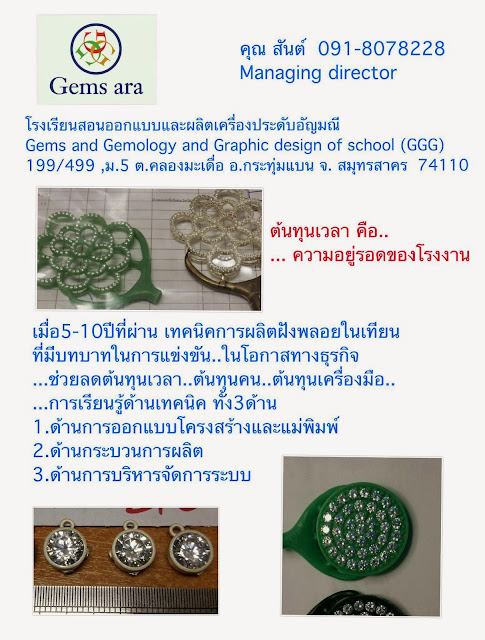GENERAL CASTING ADVICE ON STONE IN WAX CASTING
We hope that this section is a helpful tool and will help you to begin to cast stone in wax pieces. However much care and testing should precede the manufacture for full production runs, especially when using precious stones. Ensure your equipment is calibrated accurately and that you have taken the appropriate steps to fully educate yourself on the entire stone in place process.
WHICH STONES CAN I USE?
Many stones can be cast in place but not everything. Stone-in-wax casting always involves risk— stones can break or have their appearances changed by any number of factors during this intricate process.
A word of caution when trying to use stones where the colour has been enhanced by heat-treating: the casting process may negatively affect the stones appearance and colour. Always test stones first for colourfastness and heat tolerance during casting before using them in your stone-in-wax designs.
If you are not sure whether your stones can be used we have a simple test as follows:
We suggest taking two stones of the same kind, imbedding one in a paper or plastic drinking cup with investment and running through the burnout process. Compare the two after the burnout to see if the quality of the stone has changed.Do not use lab-created spinel doublets in stone-in-wax settings.Use good quality stones, which are of a consistent size for stone in wax setting. CLICKSET™ masters are engineered to close tolerances and will not always accept variation in stone sizes. Out of calibration over sized stones can be set in the wax however, heat and pressure from the casting process can crack or break the stones later in the process costing money in lost production and set up time. Choose to use quality-calibrated stones for the best results with stone in wax setting.It is safe to say that most soft stones cannot be used. It does not matter weather the stone is transparent or not the hardness is the key.Larger more expensive stones should not be attempted because there is always a risk of damage to the stone.Highly included or fractured stones should not be cast in place.Stones that have been found to be unsuitable for stone in casting include: amethyst, lapis, pearls, peridot, topaz, tourmaline, turquoise and black colour CZ’s.opal can be cast in place, but care has to be taken to heat and cool these stones very slowly.When using CZ in the stone in wax models keep in mind that small stones (under 2mm) can withstand temperature shock and typically do not tend to crack easily. They however will dull more quickly than larger diameter CZ stones. CZ over 5mm diameter tends to be more susceptive to temperature shock stress cracking. Make temperature transitions as smooth as possible to reduce the opportunity for shock cracking of larger CZ material stones.The shape of the stone to be cast in place should also be considered. Stones with knife edge girdles, inclusions and sharp points are at higher risk for potential damage.Proper point voids should be built into the master to accommodate stone shapes like Marquise, Pear, Trillion, Trilliant or Princess cuts. Voids in the model where the points of the stone rest relieve any stone stress and reduce the opportunity for the tip to break when hot metal is cast around the stone later in the process.
http://www.srs-ltd.co.uk/technical/stone_wax_setting.html
ข้อมูลที่จะสอนเน้นด้านเทคนิคที่นอกเหนือจากข้อมูลเฉพาะที่ผ่านการทดลองแบบใหม่ๆ..know how




ไม่มีความคิดเห็น:
แสดงความคิดเห็น